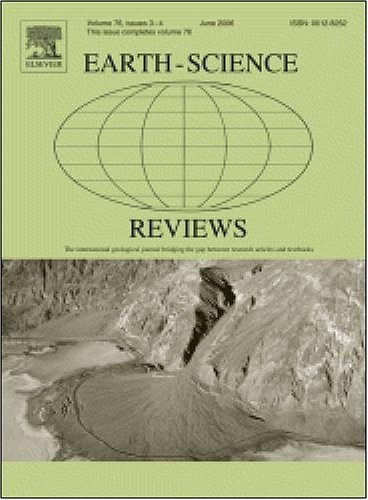现代碳酸盐岩潮外环境相叠置模式及其层序地层意义
IF 10
1区 地球科学
Q1 GEOSCIENCES, MULTIDISCIPLINARY
引用次数: 0
摘要
“浅层向上”(准层序)基序长期以来一直主导着对床级碳酸盐旋回的理解,并最终主导着台地内部岩石沉积的层序地层模型。为了评价浅层向上假说的可行性,对许多“经典”潮外环境的中-晚全新世海岸碳酸盐序列进行了回顾。这一评估表明,简单的浅层向上的假设在很大程度上没有得到现代系统观测的总和的支持。潮滩一般不会直接向泻湖推进,形成浑浊的浅滩向上循环,而泻湖也不会越过它们自己的保护浅滩屏障,形成粒状的浅滩向上循环。相反,海侵沉积构成了碳酸盐沉积序列的重要组成部分,形成了加深向上的母带,其中旋回基潮滩和泻湖残余物被一个沟积面覆盖,标志着一个海侵碳酸盐屏障的通过,然后被开放台地沉积覆盖。在此之上,有退退沉积物,以泻湖废弃和滨滩覆盖的颗粒状滨面沉积为代表,上覆仅容纳薄的、不连续的潮间带泥滩及其在山脊间沟壑中的潮下排水通道。这些观测结果表明,副层序的构造不如含有海侵和海退成分的高阶层序的构造有用。这些观察和解释的影响是广泛的,并且产生了对基于现代海岸系统的海岸碳酸盐的更新层序地层模型的需求,并且可以与岩石记录进行比较。这些模型在预测大规模地下连通性方面与目前使用的模型有很大不同。本文章由计算机程序翻译,如有差异,请以英文原文为准。
Facies stacking patterns in modern carbonate peritidal settings and their sequence-stratigraphic implications
The ‘shallowing-upward’ (parasequence) motif has long dominated the understanding of bed-scale carbonate cycles and, ultimately, sequence-stratigraphic models for platform-interior deposits of the rock record. To evaluate the viability of the shallowing-upward assumption, a review of mid- to late-Holocene coastal carbonate successions from many “classic” peritidal settings was undertaken. This assessment shows that the simple shallowing-upward assumption is largely unsupported by the aggregate of modern-systems observations. Tidal flats generally do not prograde directly into lagoons to create muddy shallowing-upward cycles, and lagoons are not observed to prograde over their own protective shoal barriers to create grainy shallowing-upward cycles. Instead, transgressive deposits comprise an important component of carbonate depositional successions, forming deepening-upward motifs, where cycle-base tidal-flat and lagoonal remnants are overlain by a ravinement surface, signifying the passing of a transgressing carbonate barrier, and then are overlain by open-platform deposits. Overlying this, regressive deposits, where present, are represented by lagoonal abandonment and grainy shoreface progradation capped by strandplains, with overlying accommodation only for thin, discontinuous, intertidal mud flats and their subtidal drainage channels in inter-ridge swales. These observations indicate that the construct of the parasequence is less useful than that of a high-order sequence containing transgressive and regressive components. The implications of these observations and interpretations are wide-ranging and have generated the need for updated sequence-stratigraphic models for coastal carbonates based on modern coastal systems, and with which the rock record can be compared. These models are meaningfully different from models currently in use with respect to predictions of large-scale subsurface connectivity.
求助全文
通过发布文献求助,成功后即可免费获取论文全文。
去求助
来源期刊

Earth-Science Reviews
地学-地球科学综合
CiteScore
21.70
自引率
5.80%
发文量
294
审稿时长
15.1 weeks
期刊介绍:
Covering a much wider field than the usual specialist journals, Earth Science Reviews publishes review articles dealing with all aspects of Earth Sciences, and is an important vehicle for allowing readers to see their particular interest related to the Earth Sciences as a whole.
 求助内容:
求助内容: 应助结果提醒方式:
应助结果提醒方式:


